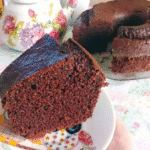Bread, a staple food in many cultures, has a rich history spanning centuries. From the ancient Egyptians to modern-day artisanal bakeries, the art of baking bread has evolved, yet the allure of rustic breads remains timeless. In this essay, we will explore the beauty of simplicity in the art of baking rustic breads, examining their history, characteristics, and significance in contemporary culinary culture.
Historical Roots of Rustic Breads
To understand the essence of rustic breads, we must delve into their historical origins. The tradition of baking bread dates back to ancient civilizations, where grains were ground and mixed with water to create simple doughs. The earliest forms of bread were unleavened, relying on natural fermentation processes or the addition of sourdough starters for leavening. As societies advanced, so did bread-making techniques, leading to the development of various bread styles and flavors.
Ancient Origins
Ancient Egyptians are credited with some of the earliest recorded bread-making practices. Archaeological evidence suggests that they used a combination of emmer wheat and barley to produce flatbreads, which were baked on hot stones or in rudimentary ovens. These early breads were rustic in nature, reflecting the simplicity of the ingredients and the baking methods employed.
Medieval Europe
During the Middle Ages, bread held significant cultural and economic importance in Europe. Each region developed its own unique bread varieties, shaped by local ingredients and traditions. In rural areas, rustic breads were common, made from coarsely ground grains and leavened with natural yeasts. These breads served as sustenance for peasants and nobles alike, highlighting their universal appeal and accessibility.
Characteristics of Rustic Breads
Rustic breads are distinguished by their simplicity and authenticity. Unlike mass-produced breads, which prioritize uniformity and shelf life, rustic breads celebrate imperfection and irregularity. Several key characteristics define rustic breads:
Crusty Exterior
One of the hallmarks of rustic breads is their crusty exterior, achieved through high-temperature baking and minimal handling of the dough. The crust is often deeply colored and irregularly shaped, reflecting the artisanal nature of the baking process. This crunchy exterior provides contrast to the soft crumb inside, creating a satisfying textural experience.
Chewy Crumb
Rustic breads typically have a chewy crumb with an open, airy structure. This texture is achieved through proper fermentation and hydration of the dough, allowing gluten development and gas retention during baking. The resulting crumb is elastic yet tender, offering a delightful mouthfeel and superior flavor absorption.
Simple Ingredients
Another defining feature of rustic breads is their use of simple, high-quality ingredients. Flour, water, salt, and yeast or sourdough starter are the basic components of most rustic bread recipes. These ingredients are combined in varying proportions to create different bread styles, from hearty whole grain loaves to delicate French baguettes. By emphasizing the natural flavors of the ingredients, rustic breads showcase the purity and integrity of traditional baking practices.
Significance in Contemporary Culinary Culture
In recent years, there has been a resurgence of interest in artisanal breads, driven by a growing appreciation for craftsmanship and authenticity in food. Rustic breads, with their emphasis on simplicity and tradition, have emerged as a symbol of this culinary renaissance. Several factors contribute to the significance of rustic breads in contemporary culinary culture:
Connection to Heritage
For many people, rustic breads evoke a sense of nostalgia and connection to their cultural heritage. Whether it’s a crusty Italian ciabatta or a hearty German vollkornbrot, these breads carry the flavors and traditions of generations past. In an increasingly globalized world, rustic breads serve as a tangible link to ancestral roots and culinary legacies.
Exploring the Fascination of Connection to Heritage
In a world that seems to be hurtling towards an increasingly homogenized global culture, there’s a growing interest in reconnecting with one’s roots and heritage. This fascination with connection to heritage is multifaceted, touching on aspects of identity, history, tradition, and belonging. In this article, we’ll delve into the curious allure of exploring one’s heritage and the ways in which it enriches our lives.
Rediscovering Roots
For many individuals, the journey of exploring their heritage begins with a desire to rediscover their roots. Whether it’s tracing back family lineage, uncovering ancestral traditions, or revisiting cultural practices, this process of rediscovery can be both enlightening and empowering. By delving into the past, we gain a deeper understanding of who we are and where we come from, forming a stronger sense of self and belonging.
Preserving Cultural Traditions
Connection to heritage also involves the preservation and celebration of cultural traditions. From language and cuisine to music and art, every culture boasts a rich tapestry of traditions that reflect its unique identity and history. By engaging with these traditions, whether through participation in cultural festivals, learning traditional crafts, or cooking ancestral recipes, individuals play a vital role in keeping their heritage alive for future generations.
Building Bridges Across Generations
Heritage serves as a bridge that spans across generations, connecting the past, present, and future. Through storytelling, oral history, and intergenerational exchanges, elders pass down their knowledge, wisdom, and experiences to younger generations, fostering a sense of continuity and legacy. This intergenerational dialogue not only strengthens family bonds but also nurtures a deeper appreciation for the struggles and triumphs of previous generations.
Fostering Cultural Pride
Exploring one’s heritage can instill a sense of cultural pride and resilience. By recognizing and embracing the contributions of their ancestors, individuals develop a greater appreciation for the resilience and perseverance of their cultural heritage. This pride serves as a source of strength and inspiration, empowering individuals to overcome challenges and adversities with a sense of resilience rooted in their cultural identity.
Connecting with Global Communities
In an increasingly interconnected world, connection to heritage also extends beyond individual or familial ties to encompass broader cultural communities. Through cultural exchange programs, heritage tourism, and digital platforms, individuals have unprecedented opportunities to connect with people from diverse cultural backgrounds and learn from their shared experiences. This global exchange of ideas and traditions enriches our understanding of the human experience and fosters a sense of global citizenship.
The curiosity surrounding connection to heritage stems from a deep-seated desire to understand and celebrate the diverse tapestry of human culture. Whether it’s exploring one’s familial roots, preserving cultural traditions, or fostering intergenerational dialogue, the journey of reconnecting with heritage is both enriching and rewarding. By embracing our heritage, we not only honor the legacies of our ancestors but also forge deeper connections with ourselves, our communities, and the world at large.
Artisanal Craftsmanship
The revival of artisanal bread-making has sparked renewed interest in the craftsmanship and skill required to produce high-quality bread. Artisan bakers, dedicated to preserving traditional techniques and using locally sourced ingredients, have gained recognition for their commitment to excellence. By supporting artisanal bakeries and small-scale producers, consumers are contributing to the preservation of artisanal craftsmanship and the sustainability of local food systems.
Culinary Diversity
Rustic breads contribute to the rich tapestry of culinary diversity, offering a wide range of flavors, textures, and shapes to explore. From tangy sourdough boules to sweet brioche loaves, there is a rustic bread to suit every taste and occasion. This diversity reflects the cultural richness of bread-making traditions around the world, inviting consumers to experience new and unique flavors from different culinary traditions.
Conclusion
In conclusion, rustic breads embody the beauty of simplicity in the art of baking. With their humble origins and timeless appeal, rustic breads celebrate the natural flavors of simple ingredients and the craftsmanship of traditional baking techniques. From ancient flatbreads to modern artisanal loaves, the legacy of rustic breads continues to thrive in contemporary culinary culture. As consumers embrace authenticity and quality in their food choices, rustic breads remain a cherished symbol of tradition, heritage, and culinary excellence.
References
- Reinhart, Peter. The Bread Baker’s Apprentice: Mastering the Art of Extraordinary Bread. Ten Speed Press, 2001.
- Forkish, Ken. Flour Water Salt Yeast: The Fundamentals of Artisan Bread and Pizza. Ten Speed Press, 2012.
- Calvel, Raymond. The Taste of Bread: A Translation of Le Goût du Pain, Comment le Préserver, Comment le Retrouver. Springer, 2001.
- Hitz, Ciril. Baking Artisan Bread: 10 Expert Formulas for Baking Better Bread at Home. Quarry Books, 2008.
- Ortiz, Elisabeth Luard. The Latin American Kitchen: A Book of Essential Ingredients with More Than 200 Authentic Recipes. W. W. Norton & Company, 2013.
- Leader, Daniel. Local Breads: Sourdough and Whole-Grain Recipes from Europe’s Best Artisan Bakers. W. W. Norton & Company, 2007.
- Bertinet, Richard. Crust: Bread to Get Your Teeth Into. Kyle Books, 2007.
- Colicchio, Tom. Craft of Cooking: Notes and Recipes from a Restaurant Kitchen. Clarkson Potter, 2003.
- Hamelman, Jeffrey. Bread: A Baker’s Book of Techniques and Recipes. John Wiley & Sons, 2004.
- Forkish, Ken. “Rustic Bread.” The New York Times, 27 March 2016.





